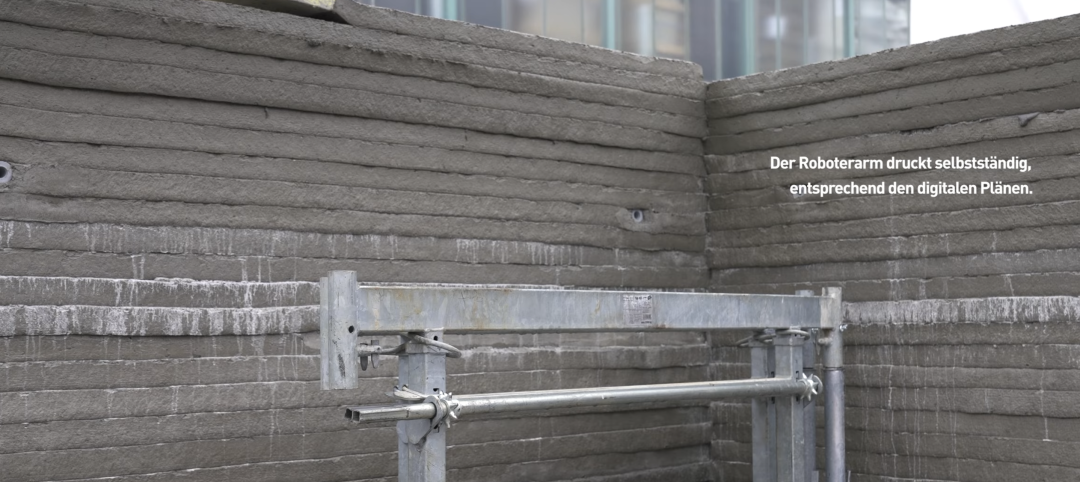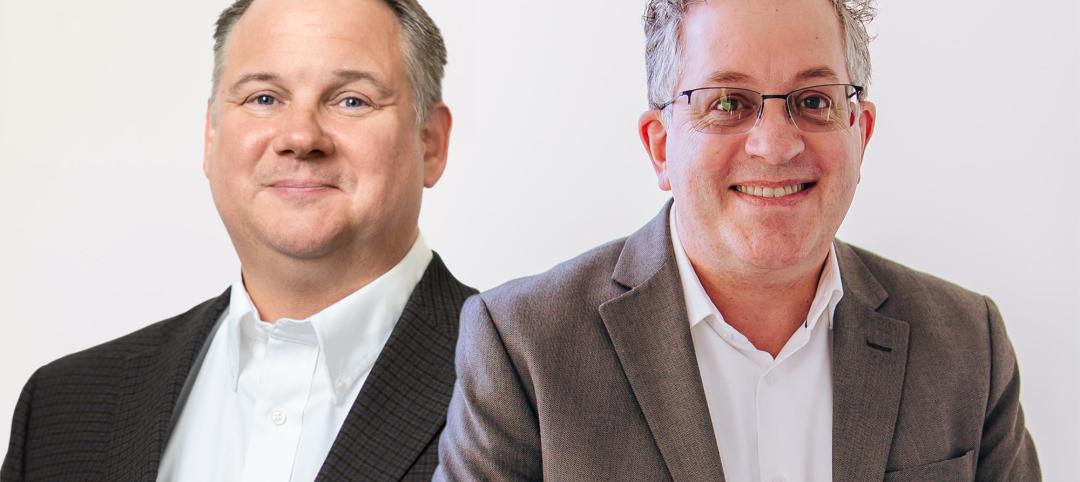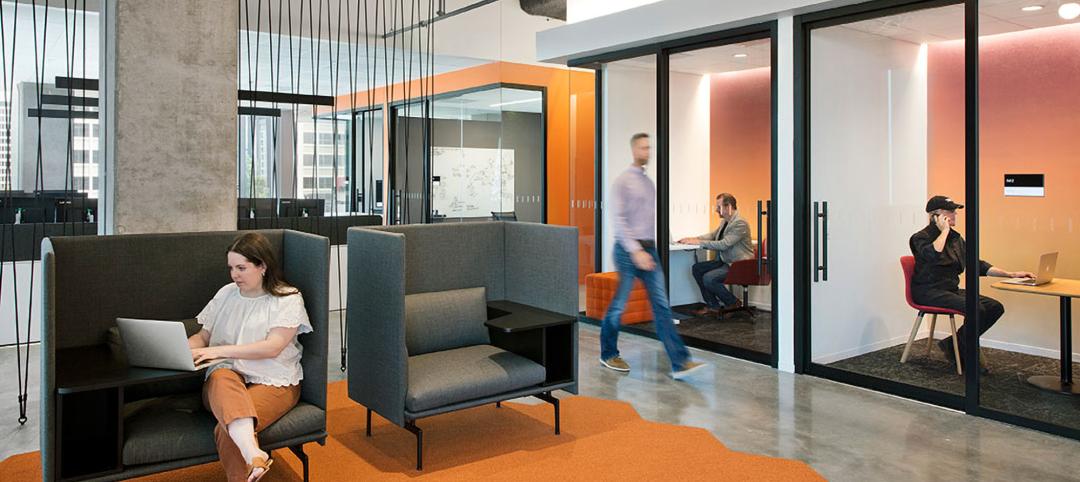To keep pace with the tsunami of Internet ones and zeroes, businesses are investing heavily in data centers, deploying new applications, embracing cloud storage, and renovating out-of-date facilities.
TOP 30 DATA CENTER ARCHITECTURE FIRMS
Rank, Firm, 2015 Revenue
1. Gensler $34,240,000
2. Corgan $32,400,000
3. HDR $15,740,000
4. Page $14,100,000
5. CallisonRTKL $6,102,000
6. RS&H $5,400,000
7. Clark Nexsen $3,105,999
8. HOK $2,535,000
9. DLR Group $1,600,000
10. Stantec $1,575,034
TOP 40 DATA CENTER CONSTRUCTION FIRMS
Rank, Firm, 2015 Revenue
1. Whiting-Turner Contracting Co., The $1,083,554,383
2. Holder Construction Co. $730,000,000
3. DPR Construction $486,876,000
4. Turner Construction Co. $474,216,912
5. Structure Tone $410,600,000
6. JE Dunn Construction $405,159,678
7. AECOM $294,660,000
8. Fortis Construction $271,709,620
9. Fluor Corp. $238,760,000
10. Gilbane Building Co. $227,161,000
TOP 50 DATA CENTER ENGINEERING FIRMS
Rank, Firm, 2015 Revenue
1. Vanderweil Engineers $41,247,200
2. Jacobs $40,110,000
3. Syska Hennessy Group $38,578,562
4. Environmental Systems Design $14,670,507
5. Highland Associates $9,100,000
6. Dewberry $8,997,875
7. Newcomb & Boyd $4,683,201
8. Ghafari Associates $4,000,000
9. Arup $3,727,928
10. Glumac $2,971,198
The need to bring new capacity online as quickly as possible is motivating individual business enterprises and co-location facilities to embrace streamlined design and delivery approaches.
“Almost all our recent data center projects have involved either a design-build or integrated delivery method to get contractors on board and moving even before the full design is finalized,” says Andy Baxter, PE, Principal of Science + Technology at Page.
A new 80-MW data center campus under construction in Garland, Texas, reflects this approach. RagingWire, a provider of co-location services, is acting as owner and contractor on the project, which encompasses five 200,000-sf buildings. The facilities have been designed so they can be replicated in other U.S. locations with only minor tweaks.
The growing availability of offsite facilities and cloud-based solutions has opened up new options for large businesses to manage their data.
“More enterprises are using a hybrid approach, which means they are comfortable outsourcing their less critical applications, but they want to control core business applications in their own facility,” says Hal Adams, AIA, LEED AP, Vice President and Regional Manager at Carlson Walbridge.
Businesses choosing to manage their own facilities are taking cues from co-location/wholesale developers to control costs. “This entails building a more flexible and scalable solution that can adjust to changing requirements over the building’s lifetime,” Adams says.
Because today’s resilient networks and software can deliver a much higher degree of reliability than in the past, highly redundant and capital-intensive Tier III and Tier IV data centers are gradually being replaced by simpler, lower-cost Tier II facilities.
“Clients now make more informed decisions about how much reliability they really need,” says Page’s Baxter. “They are no longer building one-size-fits-all facilities and are opting instead to have varying levels of reliability within the same facility. As a result, more data centers are now designed with traditional MEP systems for a lower cost.”
KEEPING EveryTHING cool and EFFICIENT
Major improvements in IT hardware are giving AEC innovators the opportunity to develop more-efficient ways to power and extract heat from equipment.
Increasingly efficient mechanical systems continue to reduce power usage effectiveness, or PUE, lowering electricity operating costs. The use of novel cooling systems, notably centrifugal chillers and indirect evaporative cooling (known as “IDEC”), can save energy costs over compressors and other air-based systems. But these water-based solutions face heightened scrutiny as resource concerns continue to intensify.
“There is a love-hate relationship that is developing with evaporative cooling,” says Brian George, AIA, Principal at Corgan. “The consumption of water is becoming increasingly problematic in some areas because of quality and availability issues.” Climate issues will only intensify these concerns.
Innovative cooling strategies are being pioneered at a new 100,000-sf data center under construction by Infomart Data Centers outside Portland, Ore. When it comes online later this year, the facility will serve as the new West Coast data center for LinkedIn, whose storage and processing needs have shot up 34% in the past year.
DPR Construction worked with the equipment manufacturer to develop a customized cooling system to accommodate IT rack payloads that will fluctuate from 3 kW to more than 30 kW on a daily basis.
“Our team and partners evaluated rack-based solutions that allow for just-in-time delivery, installation, and connection with existing cooling sources,” says DPR’s David Ibarra, Advanced Technology/Mission Critical Market Co-Leader. He says his team’s goal was to not only successfully install hundreds of these cooling systems, but also to “flawlessly test” each of them as they were installed to avoid any impacts on the schedule.
GROWTH AT THE EDGE
The demand for new data centers located closer to end users is also on the rise.
“By bringing data closer to the consumer, edge data centers are looking to eliminate network latency or performance issues,” says Richard Green, Director, Mission Critical Group, JE Dunn Construction. Green says this pattern is fueling data center growth outside of core connection hubs like the New York City region and Silicon Valley.
Content providers may still operate large data centers in major regional markets, but many also have edge data centers in smaller regional markets, plus micro data centers in other locations.
“This means we are now pursuing work with clients all over the country instead of just in specific regions,” says Page’s Baxter. “These facilities are much more compact, repeatable, and cost efficient, sometimes as small as a single rack.”
Looking ahead, new accounting rules that are expected to be enacted by the Financial Accounting Standards Board at the end of the year may reshape the balance of data center ownership. “These changes will treat most sale/leaseback arrangements very similarly to owned assets, which may result in more enterprise users choosing to build their own facilities,” says Corgan’s George.
RETURN TO THE GIANTS 300 LANDING PAGE
Related Stories
Laboratories | May 24, 2024
The Department of Energy breaks ground on the Princeton Plasma Innovation Center
In Princeton, N.J., the U.S. Department of Energy’s Princeton Plasma Physics Laboratory (PPPL) has broken ground on the Princeton Plasma Innovation Center (PPIC), a state-of-the-art office and laboratory building. Designed and constructed by SmithGroup, the $109.7 million facility will provide space for research supporting PPPL’s expanded mission into microelectronics, quantum sensors and devices, and sustainability sciences.
MFPRO+ News | May 24, 2024
Austin, Texas, outlaws windowless bedrooms
Austin, Texas will no longer allow developers to build windowless bedrooms. For at least two decades, the city had permitted developers to build thousands of windowless bedrooms.
Resiliency | May 24, 2024
As temperatures underground rise, so do risks to commercial buildings
Heat created by underground structures is increasing the risk of damage to buildings, recent studies have found. Basements, train tunnels, sewers, and other underground systems are making the ground around them warmer, which causes soil, sand, clay and silt to shift, settle, contract, and expand.
Sports and Recreational Facilities | May 23, 2024
The Cincinnati Open will undergo a campus-wide renovation ahead of the expanded 2025 tournament
One of the longest-running tennis tournaments in the country, the Cincinnati Open will add a 2,000-seat stadium, new courts and player center, and more greenspace to create a park-like atmosphere.
Mass Timber | May 22, 2024
3 mass timber architecture innovations
As mass timber construction evolves from the first decade of projects, we're finding an increasing variety of mass timber solutions. Here are three primary examples.
MFPRO+ News | May 21, 2024
Massachusetts governor launches advocacy group to push for more housing
Massachusetts’ Gov. Maura Healey and Lt. Gov. Kim Driscoll have taken the unusual step of setting up a nonprofit to advocate for pro-housing efforts at the local level. One Commonwealth Inc., will work to provide political and financial support for local housing initiatives, a key pillar of the governor’s agenda.
Building Tech | May 21, 2024
In a world first, load-bearing concrete walls built with a 3D printer
A Germany-based construction engineering company says it has constructed the world’s first load-bearing concrete walls built with a 3D printer. Züblin built a new warehouse from a single 3D print for Strabag Baumaschinentechnik International in Stuttgart, Germany using a Putzmeister 3D printer.
MFPRO+ News | May 21, 2024
Baker Barrios Architects announces new leadership roles for multifamily, healthcare design
Baker Barrios Architects announced two new additions to its leadership: Chris Powers, RA, AIA, NCARB, EDAC, as Associate Principal and Director (Healthcare); and Mark Kluemper, AIA, NCARB, as Associate Principal and Technical Director (Multifamily).
MFPRO+ News | May 20, 2024
Florida condo market roiled by structural safety standards law
A Florida law enacted after the Surfside condo tower collapse is causing turmoil in the condominium market. The law, which requires buildings to meet certain structural safety standards, is forcing condo associations to assess hefty fees to make repairs on older properties. In some cases, the cost per unit runs into six figures.
Office Buildings | May 20, 2024
10 spaces that are no longer optional to create a great workplace
Amenities are no longer optional. The new role of the office is not only a place to get work done, but to provide a mix of work experiences for employees.

















